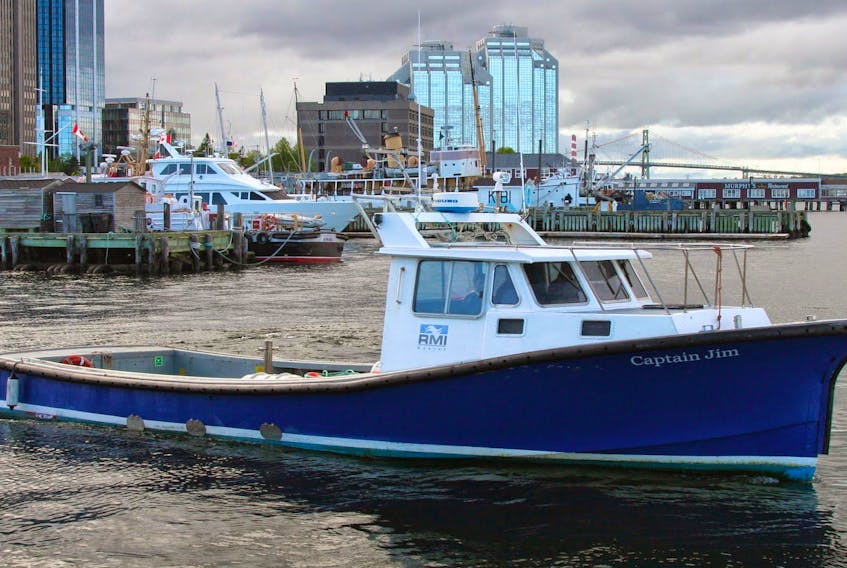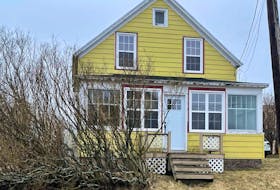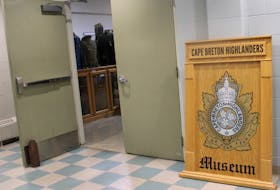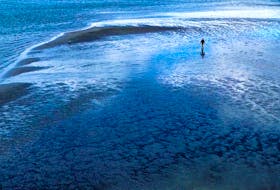The Transportation Safety Board of Canada is investigating the sinking of a boat that resulted in the death of a young Cole Harbour man in late January.
“A full report will be produced following this investigation, which will take several months,” TSB spokesman Alex Fournier said Thursday.
Fournier said the investigation was launched in the immediate aftermath of the Captain Jim, a 12-metre boat, sinking off Devils Island at the mouth of Halifax Harbour in the early morning hours of Jan. 29.

The Captain Jim was returning to Eastern Passage after conducting routine commercial passenger operations when the captain sent out a distress call at about 2:15 a.m., RMI Marine, the vessel’s owner, said at the time. The boat had lost power and was taking on water, according to the Joint Rescue Co-ordination Centre.
The company said the senior captain, a deckhand and a passenger signalled they were preparing to abandon the vessel some 20 minutes after the distress call.
“Unfortunately, the vessel went down so quick that only the captain and passenger made it to the deployed lifeboat,” the company said in a release.
A Halifax pilot boat rescued the captain and passenger, who were wearing flotation devices but not survival suits. The body of crew member Max Hinch, 24, was found by navy divers about nine hours later.
Fournier said the investigation could take up to 450 days or 15 months to complete.
An RMI Marine spokesperson said Thursday that “it was an accident,” and that the company, a marine contractor specializing in diving and marine port services for 30 years, has not heard any conclusions from anybody.
But a person familiar with the situation said the answer to the sinking is likely related to an inappropriate modification to the boat.
“If they hadn’t put the freeing ports in, the boat likely wouldn’t have sunk,” the source, who wished to remain anonymous, said.
The Canadian government website defines as fully decked or closed a vessel that can take on water and get rid of it quickly, making it capable of operating in more unfavourable conditions than one that can’t. The fully decked vessel has a water-tight deck and freeing ports, openings that allow deck water to drain overboard.
The source said the Captain Jim was originally classified as an open vessel without any freeing ports.
“To have freeing ports, you need a certain minimum freeboard,” the distance from the water line to a water-tight deck. The source said the deck of the Captain Jim probably would not have been water-tight.
A closed boat needs greater freeboard distance, giving it more reserve buoyancy and better stability, the source said.
“The closed vessel with the watertight decks, you want freeing ports or open railings to clear the water off the deck. The open vessel, the assumption is that you are not going to get a lot of spray and water on board. It’s two completely different concepts. The closed boat is considered more of a heavy weather boat.”
After the May 2010 capsizing of the fishing boat Craig and Justin near Margaree Harbour in Cape Breton, the TSB marine investigation report stated that “modifications to fishing vessels, which may adversely affect safety, are often carried out without an assessment by a marine consultant or a Transportation Canada inspector.
“In this occurrence, the two forward-most freeing ports of the Craig and Justin were modified after its initial delivery without conducting an evaluation of the possible safety implications. While this did not play a significant role in the occurrence, owners may not be fully aware of the safety implications of their modifications unless they are adequately assessed.”
In the case of the Captain Jim, the source said freeing ports were apparently added at a later stage.
“There wasn’t enough freeboard ot that deck and the deck wasn’t necessarily water-tight.”
Fournier said the Captain Jim sinking will undergo a Class 3 safety investigation, a detailed investigation into an accident with a medium level of complexity. A Class 1 investigation could have been applied, which would examine several similar accidents to find any common occurrences. A Class 2 investigation is a more complex investigation of a single accident.
Hinch’s short obituary said he was born in Kitchener, Ont., and that he loved his work as a commercial diver. He is survived by his wife, Kimmie Robb, and four-year-old son Jace Robb, the obituary read.
RELATED: Crew member who died in vessel sinking was young Cole Harbour father









